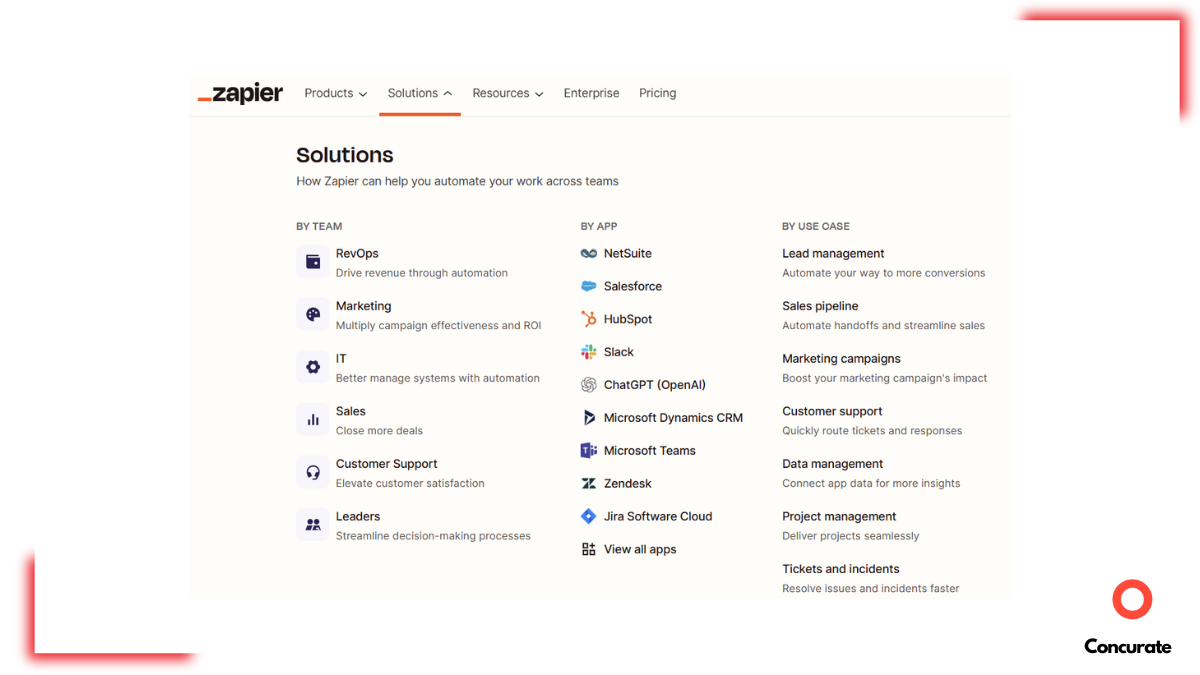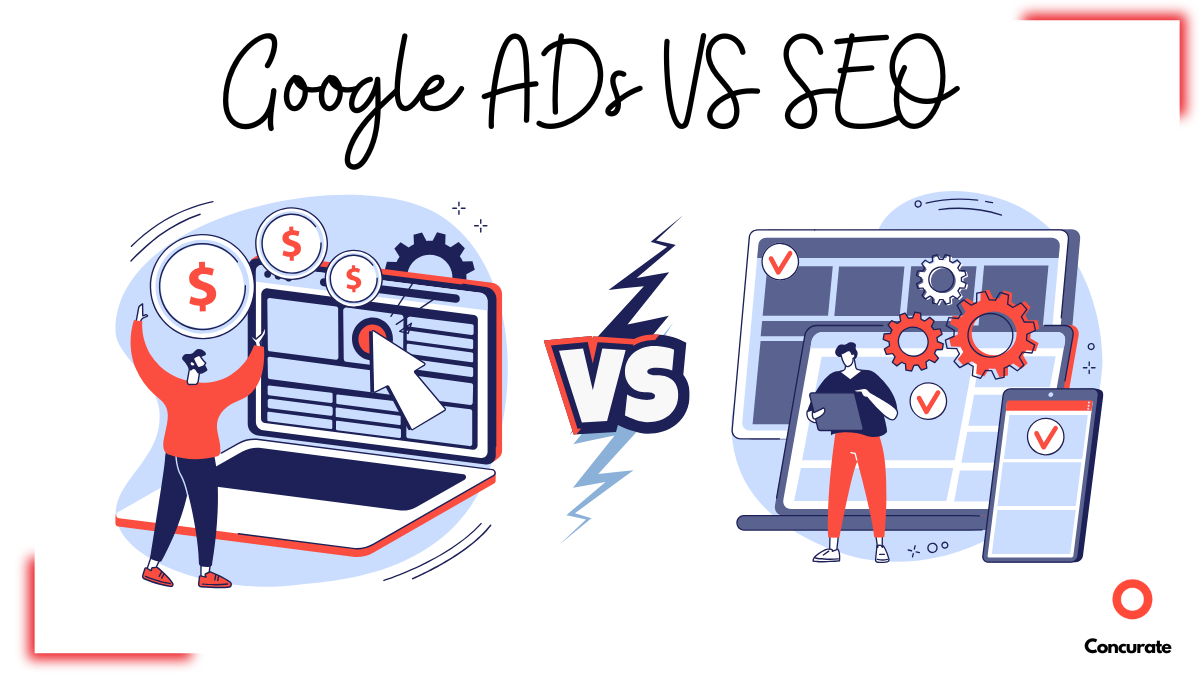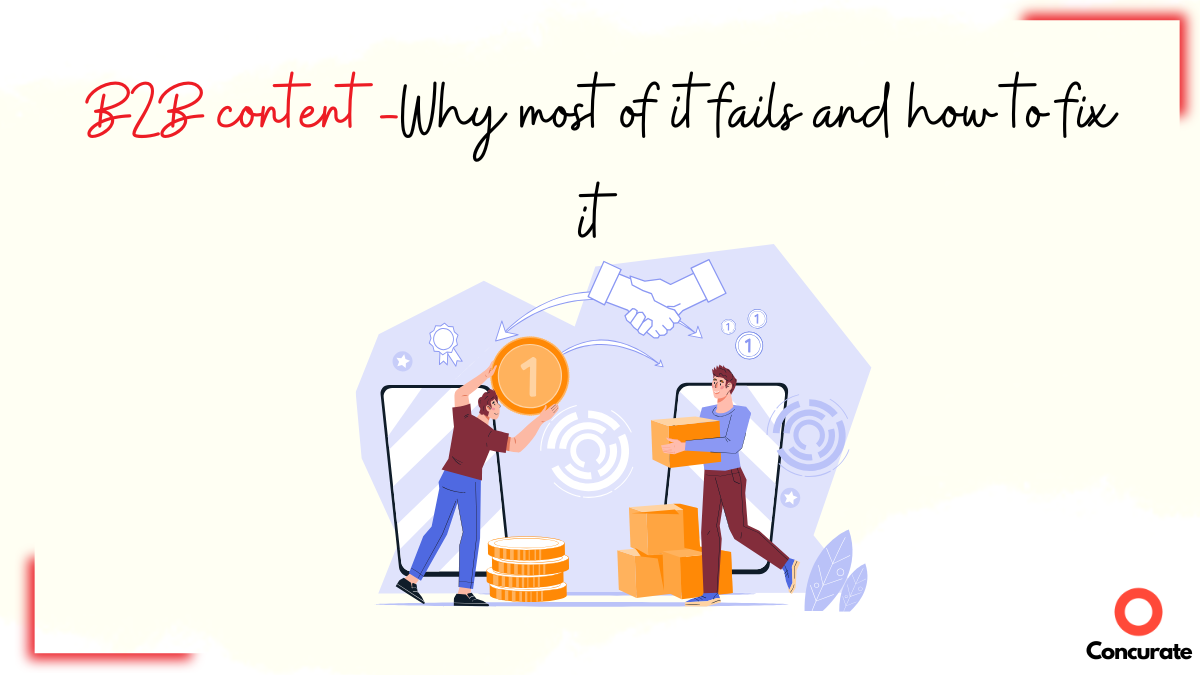B2B SaaS Inbound Marketing Tactics That Work
Inbound marketing isn’t broken. You’re just not learning from the SaaS brands doing it right.
Your team pushes out blog after blog. You target keywords. You tick the content box. But pipeline? Flat. Sales calls? Still ice-cold.
Top performers like Gong flip the script. They treat inbound as a revenue engine, not a checkbox. Their content speaks to pain points, answers objections, and fuels measurable growth.
In this article, we break down 11 inbound tactics from the world’s leading B2B SaaS brands. Every tactic is practical, proven, and built to move the pipeline.
Let’s dive in.
Why Most B2B SaaS Inbound Marketing Strategies Fail (+11 Fixes That Actually Work)
Most SaaS companies invest in inbound. Few turn it into a qualified pipeline.
And here’s the kicker: the problem usually isn’t execution. It’s a strategy.
Here’s what weak inbound looks like:
❌ Creating content without a defined ICP. Traffic grows, but no one converts.
❌ Sticking to awareness-stage topics. You educate, but don’t sell.
❌ Tracking vanity metrics. Impressions rise, but revenue doesn’t.
❌ Publishing without a distribution plan. You’re hoping SEO will save the day.
❌ Sales-marketing misalignment. Good leads get ignored or lost.
❌ Expecting overnight results. You quit before momentum builds.
Sound familiar? You’re not alone, and you’re not out of options.
We studied how top-performing B2B SaaS brands actually win with inbound so you don’t have to.
Here are 11 battle-tested lessons working right now and how to make them work for your strategy, too.
Lesson #1: Capture Search Demand by Using Your Buyer’s Words
Most SaaS companies create content based on how they define their product. Top performers like Gong flip that approach.
Gong calls itself a revenue intelligence platform, but its buyers rarely search for that. Instead, they Google terms like “call recording software” or “sales coaching platform.”
So Gong creates blog posts tailored to each of those variations. The result?
They rank for high-intent, category-level keywords by matching the exact language buyers use.
This is how you turn search traffic into the pipeline. Align your content with how your customers think, not how your company talks.
This strategy also worked for TriangleIP, an early-stage B2B SaaS product. By focusing on pain-point SEO and bottom-of-funnel keywords, we helped them rank for high-intent search terms and generate over 500 user signups through content.
Lesson #2: Create Content That Solves Real User Problems, Not Just Ranks for Keywords
Social media managers don’t search for “scheduling software.” They search for things like:
- “Why did my Instagram Reel get cut off?”
- “What’s the best time to post on TikTok today?”
- “How do I remove the watermark from a repurposed video?”
Buffer leans into those questions and builds content around them. Instead of leading with product features, Buffer creates blog posts that offer clear, platform-specific answers to real user problems.
For example, their article on Instagram Reel length explains current limits, algorithm behavior, and publishing workarounds. It gives creators exactly what they need to get unstuck.
These articles don’t always bring massive traffic. But they attract the right readers: marketers, creators, and founders who are actively trying to improve performance and consistency.
That’s what makes the content valuable. It solves a timely problem and builds trust. The product shows up as a helpful next step, not a hard sell.
This is how Buffer turns SEO into a support channel, a conversion path, and a long-term source of product-qualified traffic.
Lesson #3: Become the Authority by Going Deep on What Matters
Every niche has a handful of recurring questions your audience keeps asking. These are your pillar topics, the big themes that deserve deep, ongoing coverage.
Ahrefs is a master of this strategy. Instead of just writing a single blog about SEO, they publish a comprehensive guide to “What is SEO” and support it with detailed articles on keyword research, link building, search intent, technical SEO, and more.
Each article links to the others in the cluster. This helps readers go deeper and shows Google that Ahrefs is an expert on the topic.
This approach builds topical depth, improves rankings for competitive terms, and establishes lasting authority. For SaaS brands, covering pillar topics this way positions your site as a trusted resource. That leads to stronger visibility and better-qualified traffic.
Lesson #4: Structure Your Website Around Buyers, Not Just Features
Most SaaS websites are built around product features. Zapier takes a different approach.
Its “Solutions” section is segmented by buyer role (like Marketing or RevOps), use case (such as lead management), and app ecosystem (like Slack or HubSpot). Each page speaks directly to a specific type of user with tailored messaging and outcomes.

For example, a marketing lead doesn’t land on a generic automation page. They see how Zapier helps increase campaign ROI and streamline workflows.
This structure reflects how buyers actually think. They search and evaluate solutions based on their goals, roles, and toolsets rather than on technical features.
By applying segmentation to its website, Zapier makes content easier to find, more relevant to each audience, and more likely to convert.
Lesson #5: Boost Product Signups by Guiding Readers with Strategic Links
Great SaaS blogs don’t just attract traffic. They guide readers deeper into the product. ClickUp excels in this area with strategic interlinking.
For example, in its comparison article, ClickUp vs. Notion, each section links to related content such as ClickUp templates, use case pages, feature tutorials, and other competitive comparisons. These links aren’t just added for SEO. They’re placed with purpose, leading readers to the next logical step in their journey.
Someone comparing ClickUp to Notion might click through to learn about ClickUp’s AI features, explore templates for product launches, or see how ClickUp handles project timelines. This turns an educational blog into a product discovery experience.
The benefit is twofold: better time-on-site metrics and increased product exposure. For SaaS brands, this approach boosts organic rankings, builds topical authority, and nudges readers closer to signing up.
Strategic interlinking isn’t about adding as many links as possible. It’s about anticipating what readers want to learn next and making that step seamless.
Lesson #6: Capture Bottom-Funnel Traffic with Product-Led Alternatives Pages
Semrush ranks for high-intent keywords like “[tool] alternatives” by creating product-led pages built around real usage data. These pages include metrics like visits, authority score, and bounce rate for the featured tool and its top competitors.
For example, the joyland.ai competitor’s page shows how Joyland compares with rochat.ai, sakura.fm, and others. To view deeper insights, such as traffic cost, market size, or the full competitor list, users are prompted to create a free Semrush account.
This format turns product data into compelling content. It captures bottom-of-funnel traffic and converts visitors by offering value upfront.
We applied a similar strategy for a FinTech client using competitor alternatives and comparison pages to rank for high-intent keywords. With just three bottom-of-funnel blogs, we drove 24 inbound leads without spending a dollar on ads.
This is a repeatable inbound strategy that blends SEO visibility with product experience. It nudges users closer to signup while answering real buying questions.
Lesson #7: Turn Content into a Signup Engine Without Hard CTAs
Notion doesn’t just publish content. It builds lead capture into the reading experience.
Take articles like “5 Must-Have Templates for Your Team.” Inside, Notion introduces ready-to-use tools like an OKR Tracker, Content Calendar, and Project Manager. Each template is explained in the article, along with links to its corresponding landing page.
To use a template, visitors are prompted to sign up for a free Notion account.
By weaving product value directly into helpful content, Notion turns blog readers into active users. No pop-ups. No pressure. A clear value that naturally leads to signup.
Lesson #8: Drive Signups by Optimizing Your Support Content for Search
Slack doesn’t rely only on blog posts to drive search traffic. Instead, it turns customer education into an inbound engine by answering product questions through landing pages, help docs, FAQs, and YouTube videos.
Its Help Center ranks for long-tail queries like “how to assign tasks in Slack” and “how to use Slack for task management.” These same questions are addressed in step-by-step tutorials on Slack’s YouTube channel. Even its product landing pages include FAQ sections optimized around real search queries.
This approach scales without needing a traditional content team. It attracts users in the activation phase, captures product-led search intent, and drives signups by solving real user problems at the right moment.
Lesson #9: Nudge Buyers to Value with Smart, In-Product Messaging
Most SaaS products send the same messages to every user. Intercom takes a smarter route.
It personalizes content based on what users do inside the product. For example, if someone is exploring features but hasn’t activated their trial, Intercom might prompt them with a message like “Want a live demo of this feature?” If they’ve already used a key integration, they’ll see tips to get more out of it.
These messages appear through in-app chats, banners, tooltips, or emails, depending on the user’s stage in their journey.
The goal is simple: meet users where they are and guide them to value.
This behavior-based approach creates a smoother experience, reduces friction, and drives conversions without relying on generic email blasts or intrusive pop-ups.
It’s one of the most powerful ways to turn your product into its own marketing engine.
Lesson #10: Build Case Studies That Close, Not Just Impress
Most SaaS case studies try to entertain. HubSpot builds theirs to close deals.
Take their WeightWatchers case study. It doesn’t begin with a feel-good story. It leads with outcomes: full adoption across six teams, four tools replaced, and complete visibility of the sales cycle.
The structure reads like a RevOps sales pitch. Each section answers a buying question: What was broken? What changed? What did it deliver? The format is direct and operational. Quotes from leaders highlight the real impact on the pipeline, not vague praise.
You’re not reading a story. You’re scanning for metrics. HubSpot knows this and delivers fast. From 1 in 50 to 1 in 7 close ratio on large deals. Seven figures in new ACV. Sales reps are selling more and spending less time on admin.
Most SaaS case studies aim to impress. HubSpot aims to convert. By replacing fluffy storytelling with hard metrics and operational outcomes, they provide leadership teams with the exact proof they need to make informed buying decisions.
Lesson #11: Localize Content Beyond Translation to Win Global Buyers
Most SaaS companies aim for global reach, but few create truly localized inbound content.
Asana does. On its Japanese site, articles are written by native speakers, CTAs reflect local phrasing, and videos include Japanese voiceovers. A standout example is their piece on “110 Icebreaker Topics,” which includes culturally specific references and advice tailored to how Japanese teams collaborate.
This isn’t a translation. It’s inbound content designed for local users from the ground up.
In high-context markets, such as Japan, Korea, or France, this approach fosters trust more quickly and enhances engagement.
For SaaS CMOs, the takeaway is clear: don’t just scale content across languages. Build content hubs that align with how regional buyers search, communicate, and make decisions.
Localized inbound isn’t about visibility alone. It drives credibility and a deeper connection.
You’ve seen how top B2B SaaS brands turn inbound marketing into a revenue driver. However, applying these strategies takes more than publishing content. It requires focus, consistency, and a deep understanding of your target audience.
That’s exactly where the right partner can make all the difference.
Concurate: The Inbound Marketing Partner Built for B2B SaaS Growth
Concurate is a boutique content marketing agency that helps B2B SaaS companies attract decision-makers, not just visitors.
Our process starts with deep buyer research to uncover real pain points, search behavior, and purchase triggers.
Every blog, case study, and landing page is built to rank for high-intent keywords, earn trust with subject-matter expertise, and convert readers into leads.
This approach has delivered results across Legal Tech, FinTech, CX Tech, and Health Tech.
In one case, just three blog posts brought in 24 qualified leads for a SaaS client.
We’ve worked with notable clients such as Ratio, ScanWriter, Triangle IP, Enghouse Interactive, Helios, and Xoxoday.
If you’re ready to move beyond surface-level traffic and start driving results, schedule your consultation with Concurate.
B2B SaaS Inbound Marketing: Everything SaaS CMOs Need to Know
1. How do I know if My B2B SaaS Company Can Invest in Inbound Marketing?
Your SaaS company is ready to invest in inbound marketing when you have:
- A clearly defined ICP.
You know exactly who your ideal buyers are. You understand their roles, pain points, and how they make decisions. Without this clarity, inbound efforts can attract the wrong audience. - Product-market fit
If you’ve moved past the MVP stage and gained early traction, inbound can help you scale efficiently and predictably. - The ability to create content consistently.
Inbound requires a steady rhythm. Whether through an internal team or a partner like Concurate, regular content creation and distribution is key. - A focus on acquisition efficiency.
Inbound marketing lowers customer acquisition costs by attracting high-intent leads through organic channels instead of depending solely on paid ads. - A long-term mindset for growth.
Inbound takes time to build momentum, but its impact compounds with time. If you’re committed to long-term results, inbound is a smart investment.
If these conditions apply, your company is in a strong position to make inbound marketing a core part of your growth strategy.
2. How Much Budget Should a B2B SaaS Company Allocate to Inbound Marketing?
Most B2B SaaS companies allocate between 10% and 40% of their total marketing budget to inbound marketing. The exact percentage depends on your company’s growth stage, revenue goals, and internal capabilities.
Here’s a breakdown to guide your planning:
🔹 Early-stage SaaS (Seed to Series A)
Allocate 10% to 20% of your marketing budget. The focus here is on building your content foundation, gaining search visibility, and capturing early demand.
🔹 Growth-stage SaaS (Series B and beyond)
Inbound budgets typically rise to 25% to 40%. At this stage, inbound becomes a key part of your go-to-market strategy, driving both lead generation and sales enablement.
🔹 Mature or enterprise SaaS
Larger teams often have dedicated inbound functions or agency partners. Inbound supports long-term brand visibility, lead nurturing, and pipeline acceleration.
🔹 In-house vs. agency investment
Hiring an agency usually costs between $3,000 and $10,000/month, depending on the scope. Building an in-house team means budgeting for salaries, tools, and production costs. While the upfront investment may be higher, it offers more control.
Your inbound marketing budget should align with your growth goals, CAC targets, and the speed at which you need to scale. When done right, inbound becomes one of the most sustainable ways for SaaS brands to generate a high-quality pipeline.
👉 Looking for plug-and-play growth ideas?
Download 30 proven B2B SaaS growth hacks that drive demos, free trials, and sign-ups.
3. What KPIs Should I Use to Measure the Success of Inbound Marketing for B2B SaaS?
To measure the real impact of inbound marketing in a B2B SaaS business, focus on KPIs that reflect lead quality, funnel performance, and revenue contribution.
Here are the most important metrics to track:
- Leads Generated by Source
Track how many leads come from organic search, referrals, and content-driven channels. This reveals the performance of inbound compared to paid or outbound. - Marketing-Qualified Leads (MQLs)
Measure how many leads match your ICP and show buying intent, such as requesting a demo or downloading gated content. - Sales-Qualified Leads (SQLs)
Monitor how many MQLs convert into sales opportunities. This indicates how aligned your inbound content is with actual buyer needs. - Customer Acquisition Cost (CAC) from Inbound
Calculate how much it costs to acquire customers through inbound. A lower CAC over time signals growing efficiency. - Funnel Conversion Rates
Analyze how leads move from visitor to MQL, SQL, and customer. These metrics help identify friction and optimize each stage. - Pipeline and Revenue Influenced by Inbound
Use attribution tools to track how much pipeline and revenue were driven by inbound content. This is one of the clearest indicators of success. - Content Performance Metrics
Support the strategy with page-level data like organic traffic, time on page, bounce rate, and engagement. These show which topics resonate most with your audience.
Inbound marketing is most effective when it leads to qualified leads, shorter sales cycles, and measurable revenue growth. These KPIs ensure your efforts stay focused on results that matter to your business.
4. What are the Top B2B SaaS Inbound Marketing Agencies?
Here are some of the leading B2B SaaS inbound marketing agencies known for driving measurable results:
- Concurate
- SmartBug Media
- Lean Labs
- Growth.cx
- Roketto
- OMNIUS
- TripleDart
- Orange Owl Marketing
Each of these agencies brings a specific focus. Some specialize in expert-led content, others in performance-driven strategies, or deep SaaS industry knowledge.
If you’d like to explore this list in more detail, compare offerings, and find the right agency for your goals, check out our full guide:
👉 8 Top B2B SaaS Inbound Marketing Agency Picks for 2025






